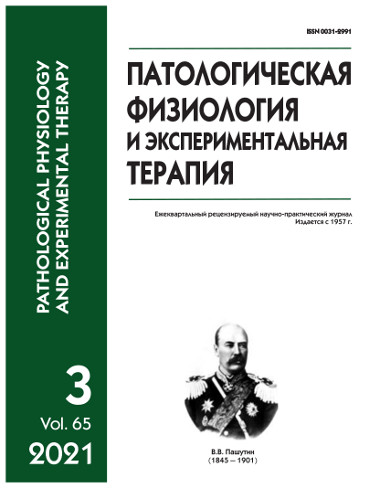The blood serum Na⁺/K⁺ ratio in orphan diseases
Abstract
Introduction. Concentrations of Na+ and K+ in the cell and in the extracellular fluid determine fundamental properties of the organism. The study used the blood serum Na+/K+ ratio as a pathophysiological criterion for the state of patients with similar pathologies of the lungs but with genetically different orphan diseases. The aim of the study was to evaluate the Na+/K+ concentration ratio in the blood serum as an integral pathophysiological parameter of the basic cell function in orphan diseases associated with lung pathology. Methods. 99 children were examined, including 24 with cystic fibrosis (CF), 15 with primary immunodeficiency (PIDs), and 11 with primary ciliary dyskinesia (PCD). The control group consisted of 15 healthy children and the comparison group consisted of 34 patients with community-acquired pneumonia, including 15 with severe disease. The patients aged from 3 mos. to 17 years. Concentrations of Na+, K+, and Cl- were measured with ion-selective electrodes on an Erba XL-200 analyzer; creatinine was measured by the kinetic method using the Jaffe reaction without deproteinization on an Erba XL-200 analyzer. Results. Concentrations of Na+ and K+ in blood serum in all groups corresponded to normal, standard values. The Na+/K+ ratio was 30.4±0.48 in healthy people, 32.7±0.8, 33.2±0.9, 32.83±0.8, and 33±1 in patients with CF, PIDs, PCD, or community-acquired pneumonia of moderate severity, respectively (р < 0.05). All these values were significantly higher than in the control group (p < 0.05). However, there were no differences for different orphan diseases. A sharp increase in the Na+/K+ ratio was revealed in the acute period of severe pneumonia (38.8±1.1, p < 0.001). The increase in Na+/K+ ratio was due to a decrease in serum K+ concentration. The creatinine clearance remained within the normal range, which indicated preservation of the homeostatic, ion-regulating function of the kidneys. Conclusion. The Na+/K+ ratio is increased in patients with orphan respiratory diseases and in children with pneumonia. A sharp increase in the Na+/K+ ratio is a manifestation of acute deterioration of the patient’s condition. Apparently, the increase in serum Na+/K+ ratio is caused by a change in cell volume.






